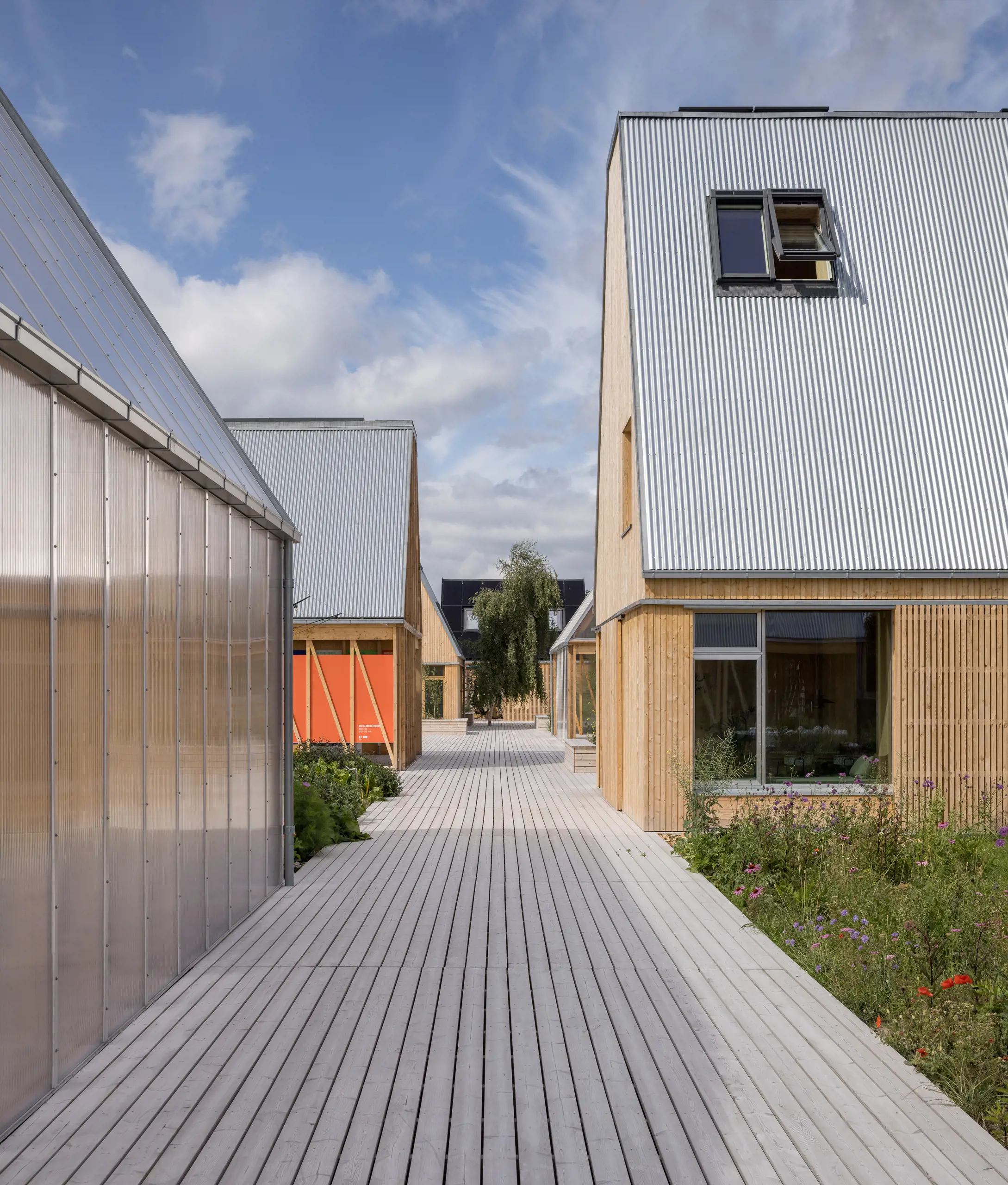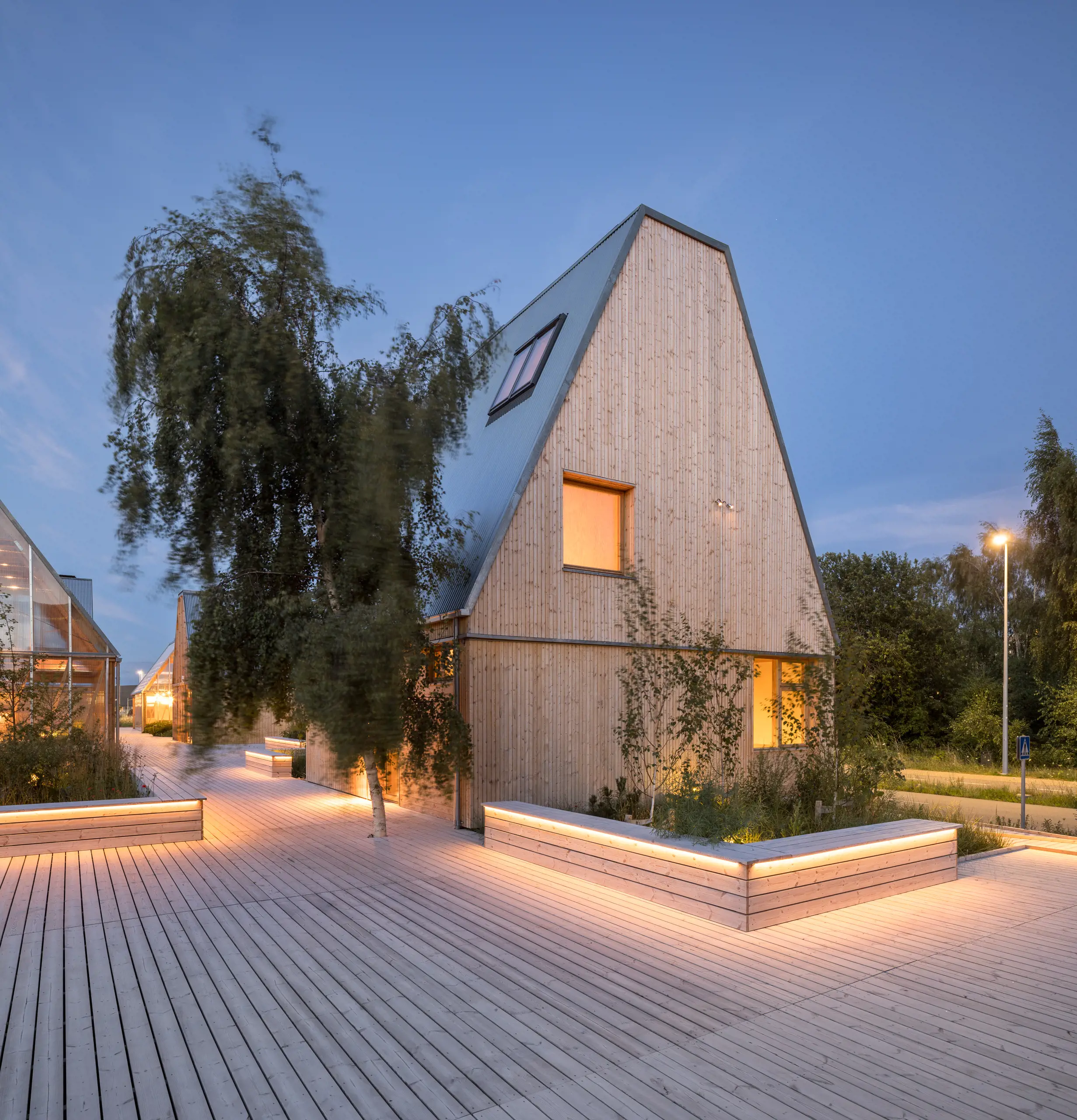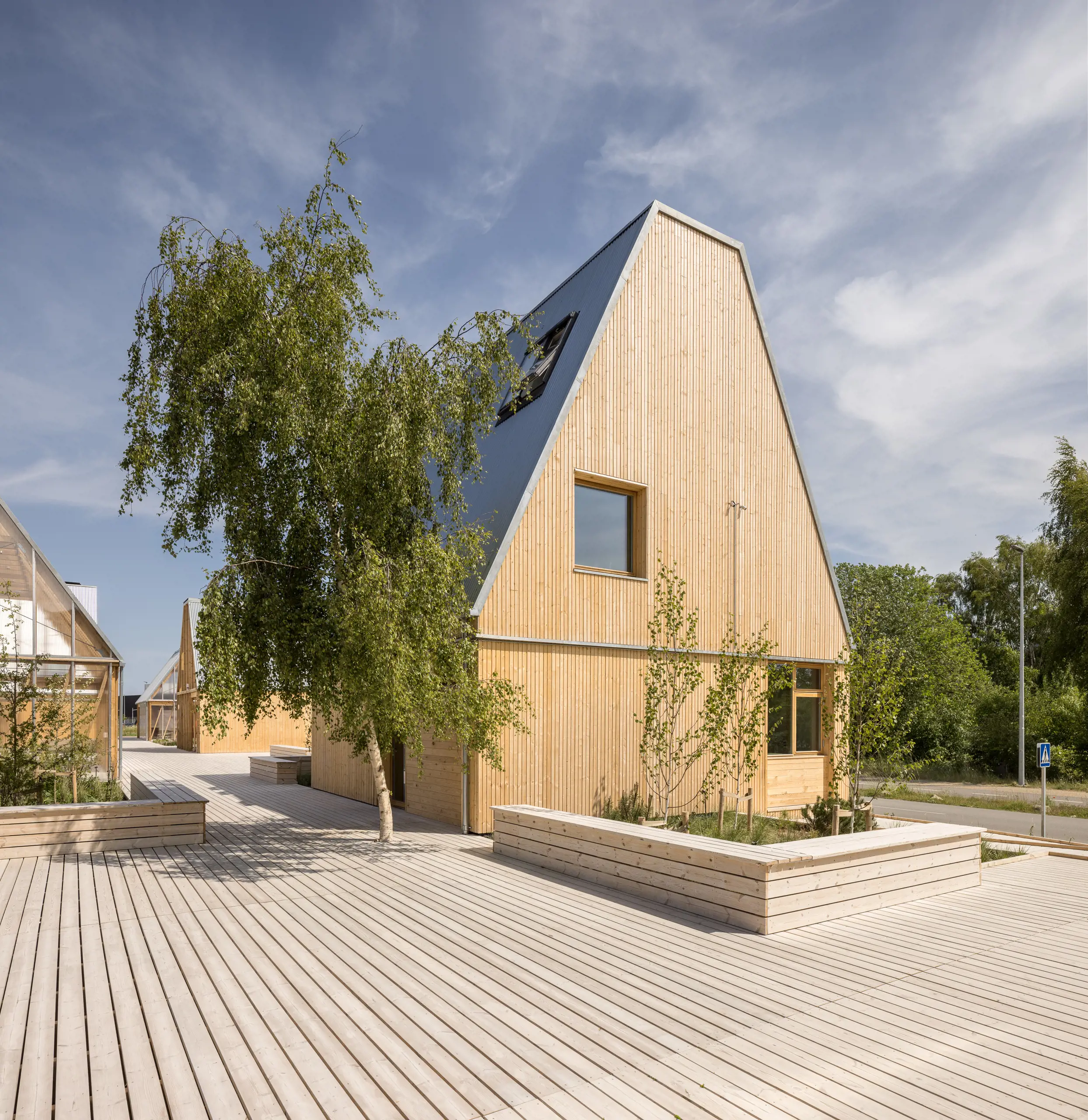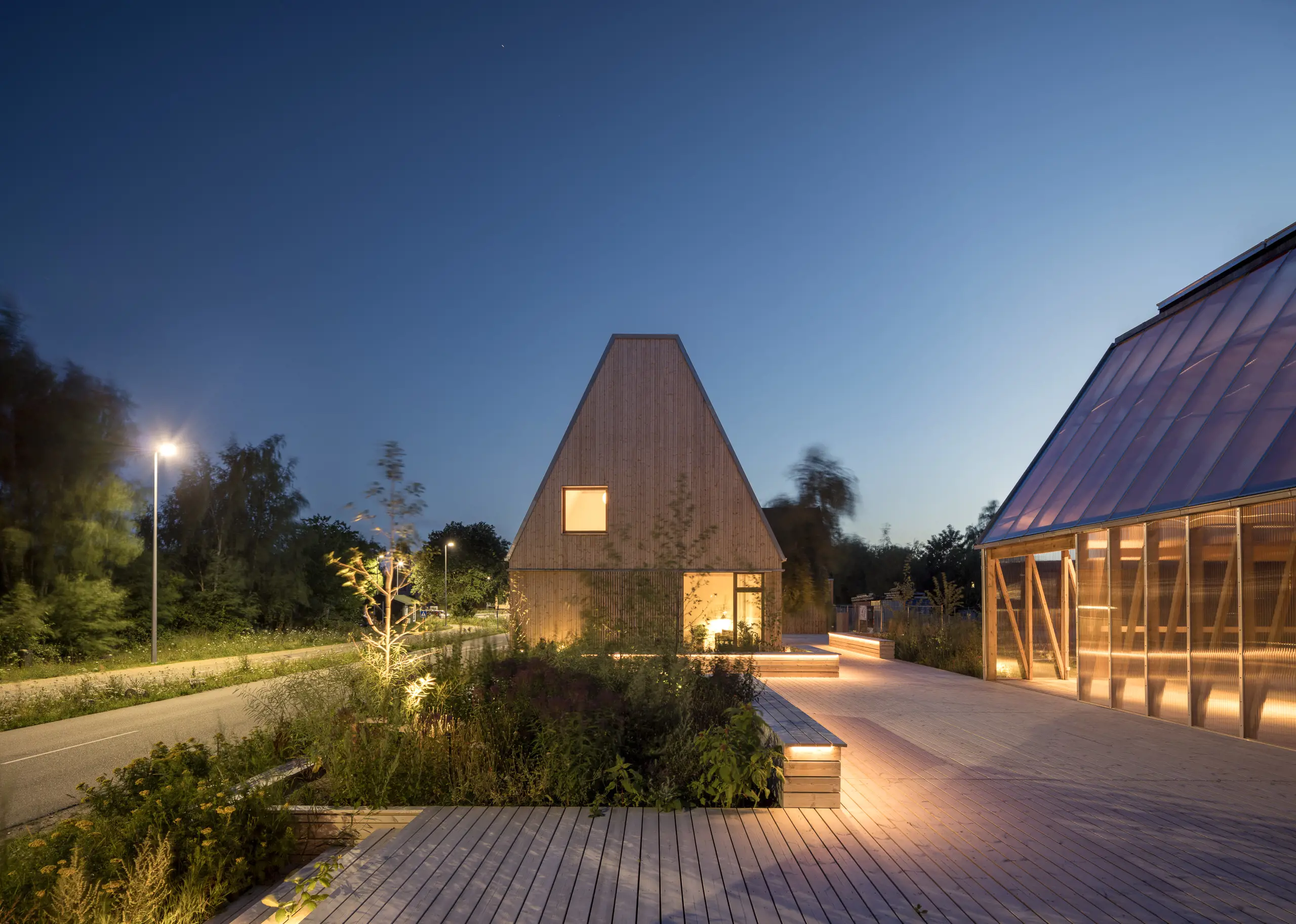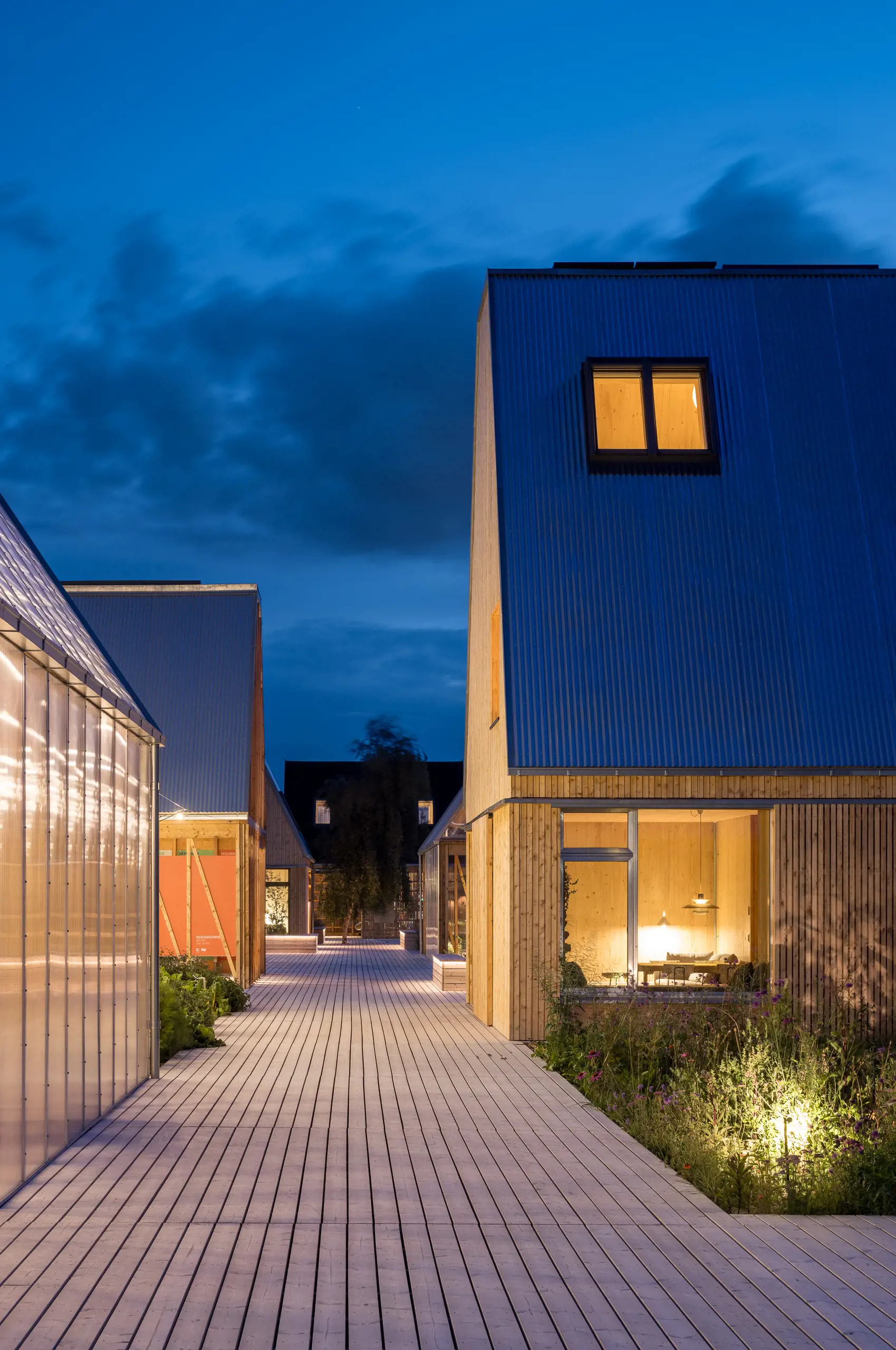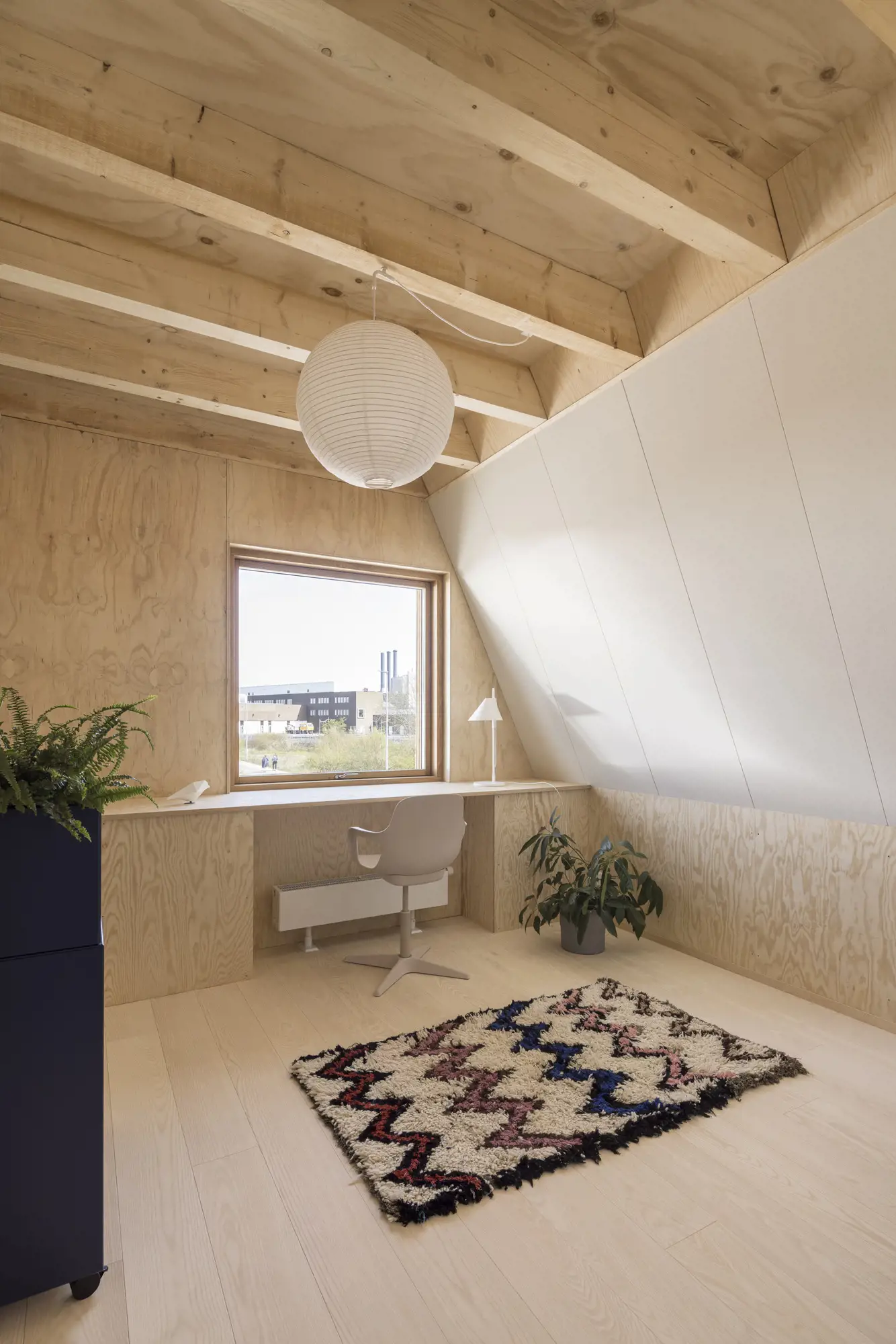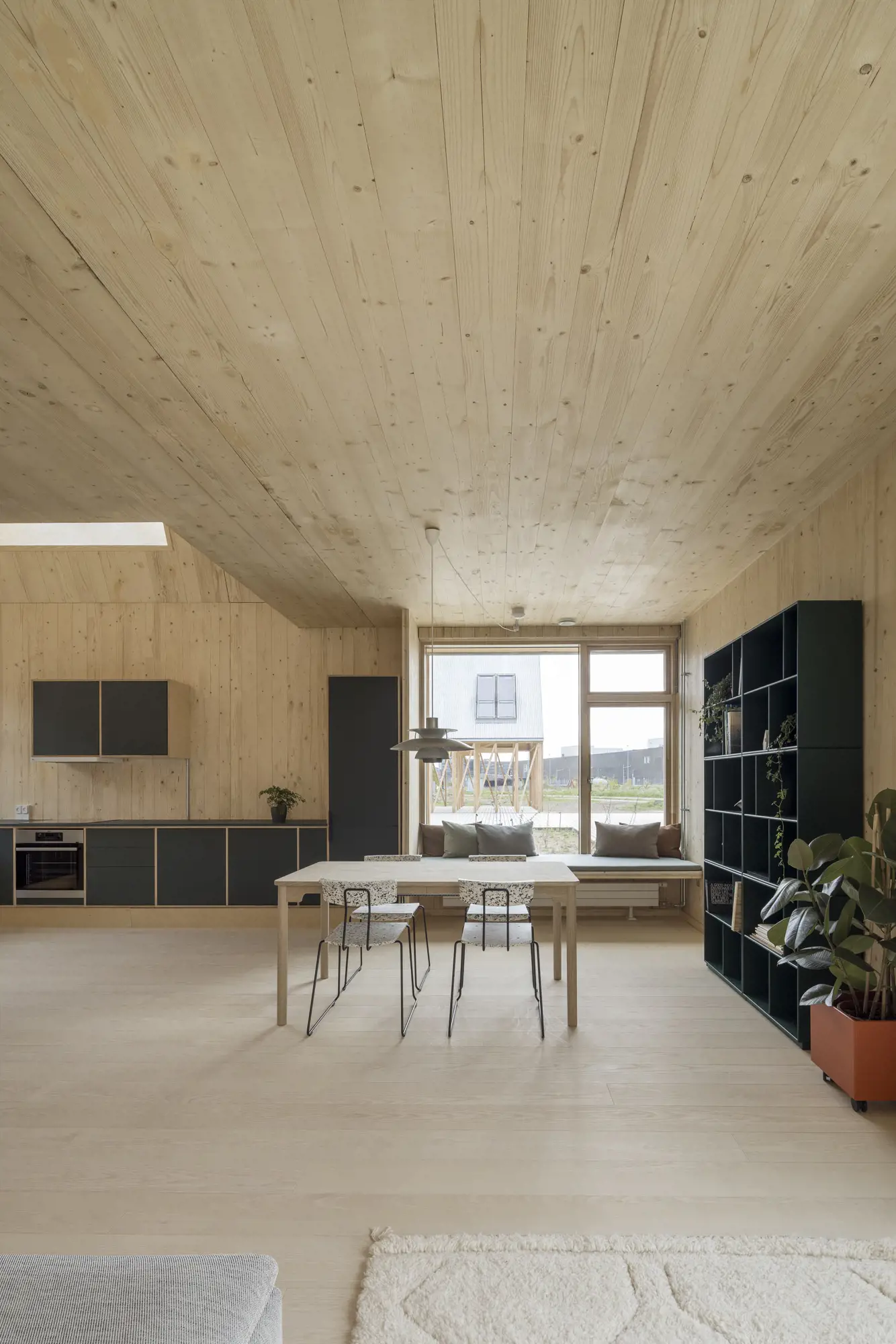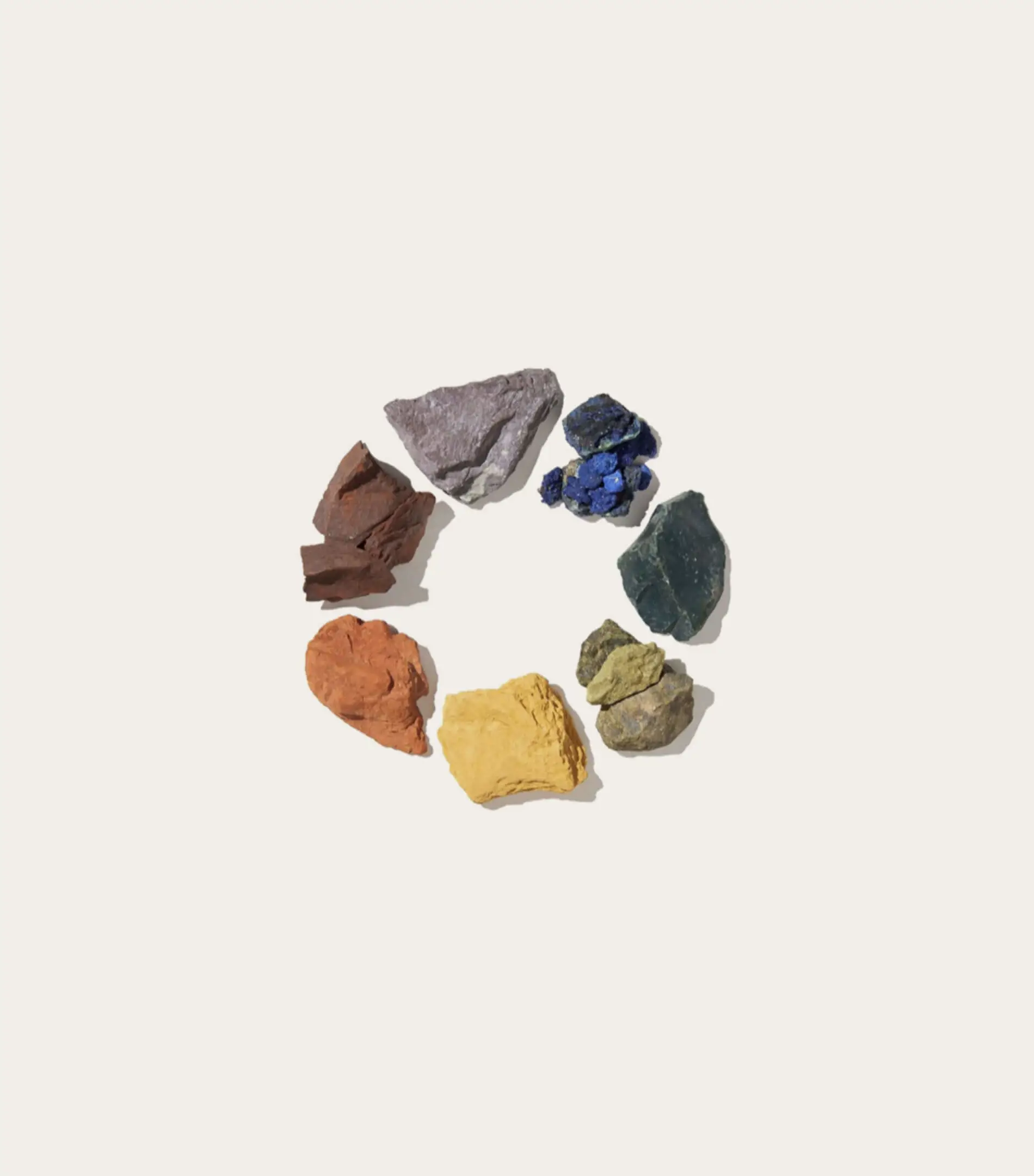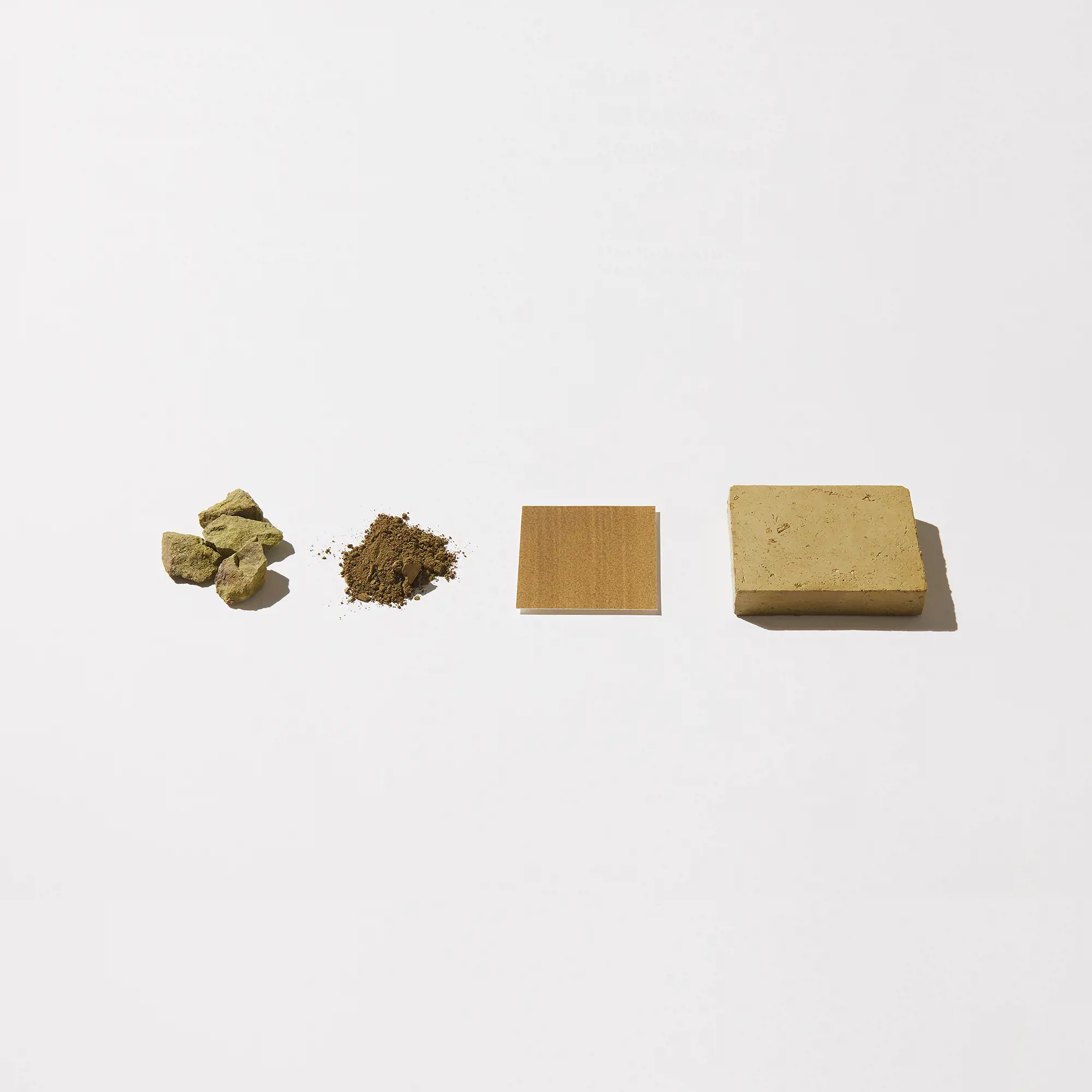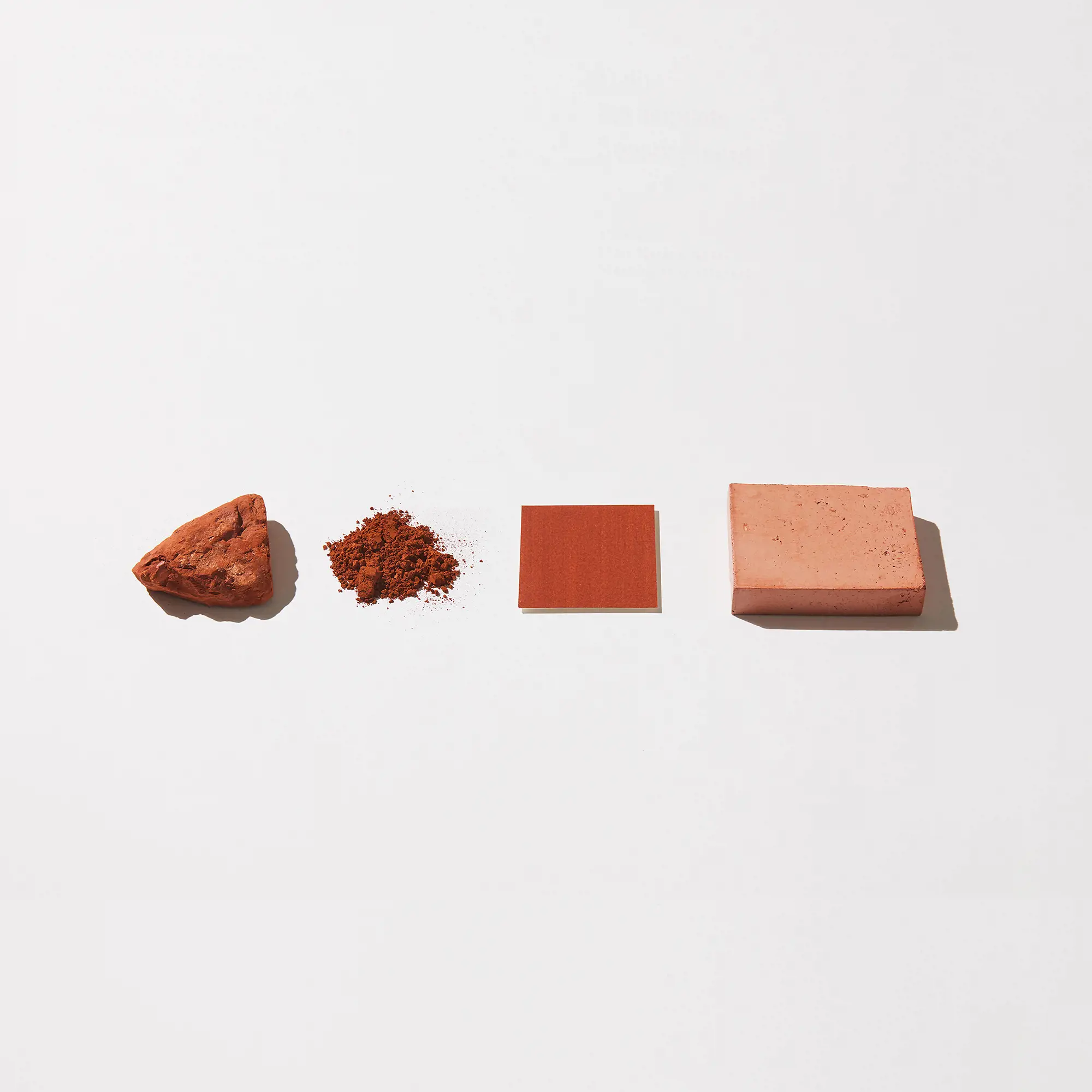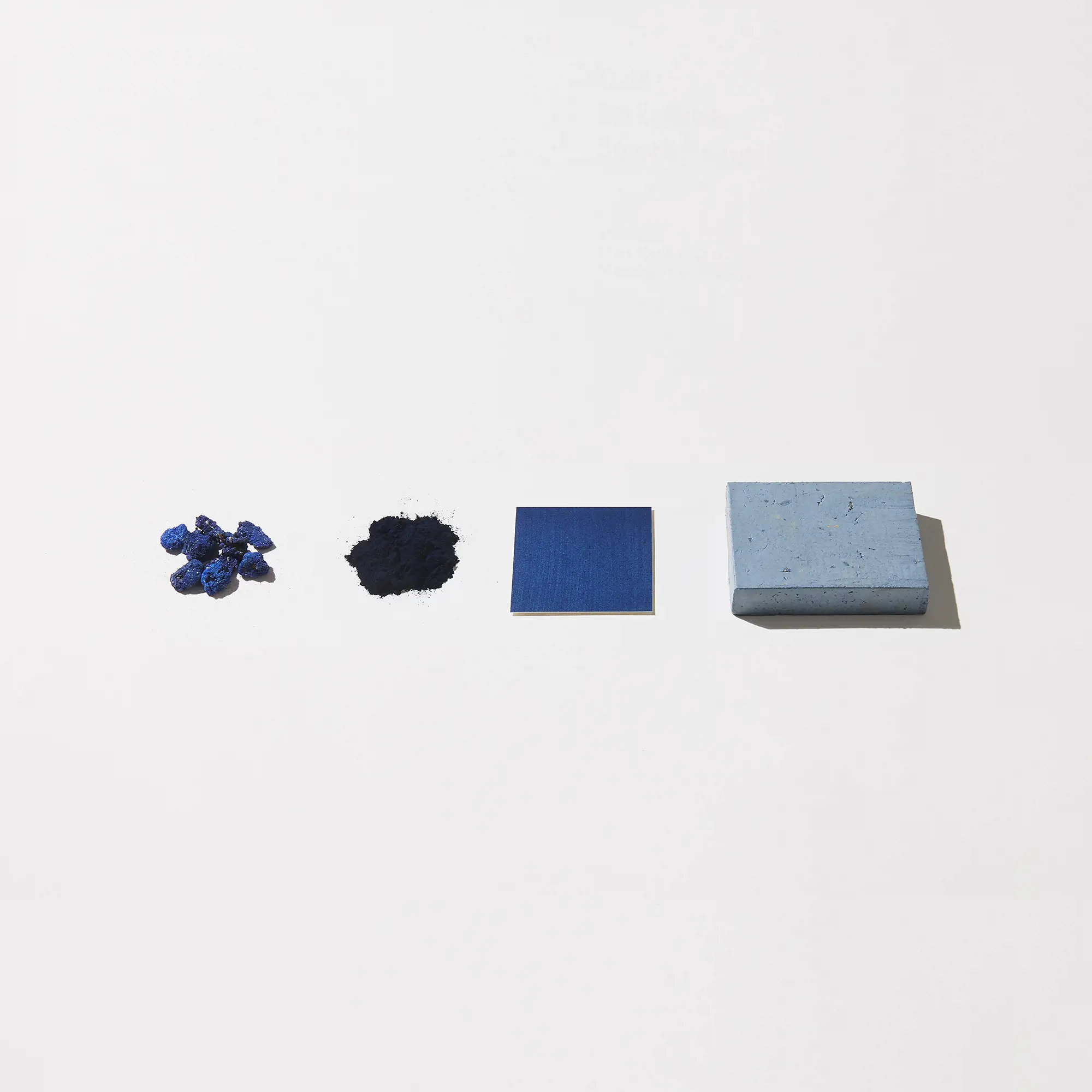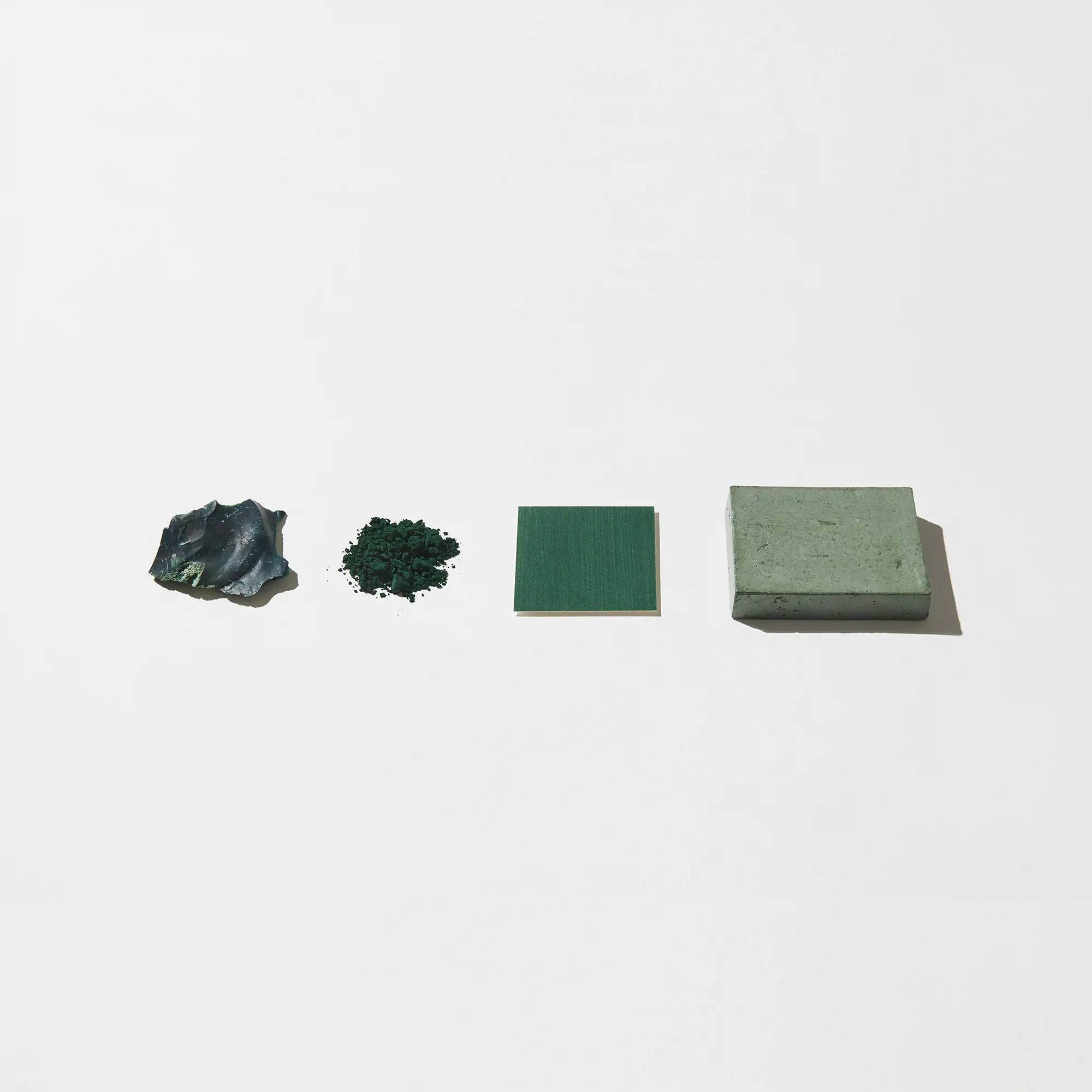Design sustainable buildings simply and effectively with the Compass Model

It’s not always easy building green
Architects are familiar with the challenges of building sustainably. From affordability to aligning with stakeholders, it’s an unfortunate truth that sustainable construction comes with its own set of complexities.
Meet the Compass Model. This free tool created by EFFEKT Architects and VELUX offers a simple, holistic framework for the planning, ideation, and design of sustainable buildings. Using seven strategic drivers, the Compass Model streamlines collaboration between teams, while ensuring quality and integrity throughout the entire design process.
You’ll be able to make more informed, sustainable design decisions from the start, with little cost and effort. The earlier these considerations are brought into the process, the greater the impact.
The model
The Compass model provides the foundation for Living Places and serves as a strategic tool that outlines seven points of relevancy to guide the building and development process. The Compass provides an incremental approach to guide the building and development process and is layered in three steps:
Each new project begins with an evaluation of the 'Strategic Drivers' that are most pertinent and can ensure the greatest positive impact.
Strategic Drivers
Relevancy drivers are used in the early stages of a project. This enables the team to constantly benchmark ideas and concepts
against these drivers.
Project teams then draw on 24 'Design Drivers' as input for the concept development process, based on the brief and specific needs of the project.
Design Drivers
Design drivers are used when the user has developed a concept/strategy for their project. This stage provides a wider range of parameters to be aware of and use in the design development of a project.
An extensive set of 'Performance Drivers' provides targeted solutions and strategies for the more advanced stages of design.
Performance Drivers
The Compass provides a list of impact drivers to ensure that the ambitions from stage 1 & 2 are achieved. The list of decisions ensures that the drivers are turned into tangible solutions for the project.
Seven strategic drivers
The Compass Model is structured around seven key drivers. Each driver represents a different aspect of the design process. By considering these drivers and the way they work together, the Compass Model allows us to prioritise design decisions and identify any areas that may require extra attention.
Flexible
Our homes must be responsive to changing life patterns and different ways of living. By designing homes that can be easily disassembled, we can reduce waste and make them simple to update based on our changing needs. Smart, responsive systems allow for ultimate flexibility and help form innovative community services and opportunities.
Quality
A good quality building is designed and built to last. With the typical user in mind, homes are designed for longevity, using quality materials and low-maintenance solutions that can be loved and lived in over and over again. It’s about merging aesthetics, function, and sustainability without compromising on quality.
Environment
More than 70% of a building’s environmental impact comes from its materials. Homes should be designed, delivered, and maintained within our planetary boundaries. By carefully considering the impact of each material and choosing durable alternatives, we can create homes with smaller footprints, longer lifespans, and minimal environmental impact.
Healthy
A healthy indoor climate can do much more than alleviate chronic diseases and allergies – it can improve the safety, productivity, and overall health of the building's occupants. Homes should therefore be designed with an optimal indoor climate – one filled with daylight and natural ventilation to make the largest positive impact on health and wellbeing.
Community
Beyond their walls, buildings have a huge impact on their surrounding environments. Homes should be designed as part of a community, where people can connect and engage, share and support. Communities designed in this way can reduce negative environmental impacts and benefit from increased social contact as well as shared space and resources.
Local
Homes should explore contemporary approaches to traditional building designs. Seeking context and inspiration from local building and climatic traditions, each home should be designed with respect to its surrounding environment, materials, technologies, and solutions that have proven valuable over time.
Affordable
It is economically feasible for the average European citizen to live in a home that is healthy, sustainable, and cost-effective without negatively impacting life on this planet. Homes should challenge the one-size-fits-all logic and adapt to diverse ways of living at an affordable price.
Case study: Living Places
Living Places Copenhagen is an experimental living environment designed using the Compass tool. The project shows that we do not have to wait for future technology to construct healthier, more sustainable buildings for people alongside planet. Using the seven drivers, the Compass was applied to meet sustainability goals while ensuring alignment and quality.
Download the Case Study
Colour concept
The Compass features a range of colour pigments derived from earth minerals. Each colour creates a link from our digital platform to the earth, in line with our vision for the future built environment. The colours – ranging from earthy reds to golden ochre and indigo – have been chosen to symbolise an environment that takes care of both people and the planet.
Photo: Andreas Omvik
Get started with The Compass
Take a deep dive into the drivers and the tool itself.
Available for use both online and offline.
01
Strategic driver
People can actively shape their home, environment, and community to everyday life needs through smart, responsive tools and services. Homes must be responsive to changing life patterns, situations, and needs. Through smart systems, people can control homes and connect them to innovative community services and opportunities.
Flexible

Building typology
Developers can choose from a range of modular building typologies that best suit their specific requirements.
Performance drivers
Set of typologies
Catalogue of different sizes that can accommodate different user groups and the functions that they can have.
Location flexibility
Capacity to adapt to different environments (rural, urban, and suburban).
Future proof
Capacity to adapt to different types of interventions (new construction, renovation, or expansion).

Interior
An adaptable interior floor plan meets the homeowner’s needs through their phases of life.
Performance drivers
Flexible furniture & appliances
Furniture and appliances with various functions that can be arranged according to the user needs.
Flexible partitions
Partitions can be moved or disassembled allowing users to modify the interior arrangement of the building.
Flexible map
Services and elements can be easily connected, replaced, and updated.
Flexible storage
Storage space that can be rearranged and reconfigured to adapt to changing needs.
Flexible floor plan
Floor plan can adapt over time to meet the changing needs of the homeowner.

Shared spaces
Flexible shared spaces enable a wide range of activities for different users through the day.
Performance drivers
Common spaces
Common spaces that enable residents the flexibility to include various programs that suit the communities' needs. Common spaces can both be designed for internal use only or be publicly accessible.
Common facilities
Increase affordability and flexibility by sharing the space for some functions that do not happen often. Guest room, workshop and repair room, playroom and kids space, sport facilities, greenhouse, etc.
Common green areas
Opens up for the informal meeting between residents. This enables them to create points of interactions between the buildings, thereby enhancing the usage of the outdoor areas and widening the boundaries of what they consider home.
Function stacking
Ensure that each space can hold several functions (efficiency), and that main activities can take place in several spaces (resilience).

Responsiveness
Integrated systems ensure that homes can adapt to a dynamic everyday life based on the user’s needs, to meet evolving individual, social, and environmental demands.
Performance drivers
Feedback on indoor climate
Indoor climate measurements are visualised to the users to inform and enlighten them on how the building is performing. For example, with a Netatmo solution and visualisations on the manufacturer’s own app.
Best practices manual
Provide users with the necessary knowledge on how to efficiently control their space. User-oriented perspective to the operation and maintenance of materials, indoor climate, and energy systems.
Feedback on consumption
Real time consumption patterns are monitored and visualised for users, promoting responsible use of energy, water, etc.
02
Strategic driver
Homes are designed for longevity using aesthetics and functional design to enable caretaking and durability, while also incorporating a user-centric approach. Quality materials and solid solutions designed to last results in longevity and creates a sense of homeliness.
Quality

Durability
Homes are designed for durability and their individual components are chosen based on their intended use and lifetime.
Performance drivers
Durable materials
Material selection with long durability in relation to the intended lifetime use.
Easy repair & maintenance
Designed for easy repair and maintenance to increase durability of the system.
Easy cleaning
Select easy-to-clean surfaces and materials that do not need chemicals to be cleaned.
Trade-off
Balance between sustainable materials and their lifespans.

Assembly
Careful consideration of how the different parts of the building come together, ensuring balanced and aesthetically pleasing interfaces.
Performance drivers
Design for disassembly
Select products and systems that allow disassembly and reuse.
Safe assembly
Select building systems that ensure safety for workers.
Easy replacement
Solutions and materials with reduced maintenance and longer times between replacements.

Nature of the space
Careful consideration of how the different parts of the building come together, ensuring balanced and aesthetically pleasing interfaces.
Performance drivers
Material connection with nature
Incorporation of wood-based surfaces in the indoor environment. Visible wood has proven to have a beneficial effect on users’ experience of well-being and should help to create a feeling of living in a wooden building.
Thermal & airflow variability
A space with good thermal and airflow variability feels refreshing, active, alive, invigorating, and comfortable. The space provides a feeling of both flexibility and a sense of control.
Bring the outdoors in
Introducing nature internally has the same effect as externally - wellbeing and fewer sick days.
Dynamic & diffuse light
Dynamic & diffuse light leverages varying intensities of light and shadow that change over time to create conditions that occur in nature.

Outdoor connection
Outdoor and semi-outdoor areas are designed to be easily accessible, visible, and inspiring.
Performance drivers
Direct view of nature
Direct view of nature has proven to have a beneficial effect on users’ experience of well-being. Sky or earth must be visible from the living room via a 30-degree angle.
Direct access to nature
Direct access to nature ensures increased hours spent outdoors. Spending more time outdoors brings multiple health benefits.
Semi-private open space
Creating a semi-private open space outside the home makes it possible to open up the home without inviting the public inside.
Presence of water
The presence of water is a condition that enhances the experience of a place through the seeing, hearing, or touching of water.
03
Strategic driver
Our homes, and the way they frame our lifestyles, are designed, delivered, and maintained with respect to planetary boundaries. The footprint of a home adheres to best practice targets in all aspects and must account for the total service life of a building, including emissions and consumption impact.
Environment

Embodied energy
Homes are designed and built with a high level of material efficiency to minimise carbon footprint.
Performance drivers
Low impact materials
Accounting for all the embodied carbon emissions (tCO2e) from the construction process (including energy consumed during construction).
Optimise floor area
Multifunctional spaces and optimised floorplans with fewer “dead areas” greatly reduce the amount of materials used.
Prefab construction
By using prefab elements, waste is reduced during construction significantly. This reduces embodied emissions and ensures resource efficiency.
Material efficiency
Select constructive solutions that reduce the amount of material needed.
Bio-based materials
Select natural materials wherever possible to offset the carbon footprint of the building and increase well-being of occupants.

Operational energy
Best practice building principles increase the home’s energy efficiency and resilience in the use phase.
Performance drivers
Motion sensors
Motion sensors in selected indoor and outdoor areas can automatically turn off the light when there is no activity, thereby saving on electricity.
Renewable energy
Installed on the roof or in the community to provide free and renewable energy for use in the household or to operate electrical appliances.
Energy-saving design
Optimised orientation of windows and shading systems, shape and location of the building, and constructive solutions.
Water-saving faucets
Use of water-saving faucets and showers. The lower water consumption also results in a smaller heating consumption, as less water has to be heated.
Energy efficient systems
Use energy effective system like a heat pump to efficiently use the energy in the outdoor air to heat water for heating and domestic hot water.
Energy-saving appliances
Installation of efficient services (Lighting, heat pumps, extractors, etc.)

Lifecycle
Homes are built for responsible disassembly to increase possibilities for future recycling of materials and components.
Performance drivers
Focus on reducing the LCA emissions
Understanding a building’s LCA allows to focus on how to reduce the emissions and benchmark materials and systems in order to select the best option. Perform LCA including all the phases of the building.
Utilise/optimise recycling potential
Investigate the possibility of reusing or upcycling materials considered “waste” that would otherwise be demolished, incinerated, or sent to landfill.
Improved lifetime of systems
Use technology to extend the lifetime of utilities and services if possible to reduce waste. Examples: Controlled systems, filters for soft water.
End of life strategies
Define what strategies will be implemented at the end of use of the building for the different components and materials and take-back schemes.
Materials with a long lifespan
Use materials with a long lifespan to ensure an extended lifetime for the building.
Digital twin
Digital twin of the building to have an overview of all components and facilitate maintenance and management.

Material sourcing
Ethical and environmental profile is improved by using components where sustainable raw materials are sourced responsibly through proper documentation.
Performance drivers
Certified materials
Prioritize the selection of materials with documented environmental product declaration (EPD).
Healthy materials
Select materials that do not have any known adverse effects on the health of users and the natural environment.
Building passport
Securely stored, digital, and up-to-date record of information on a building throughout its lifecycle.
Local sourcing
Set a target for the distance that material can travel until the construction site.
Material passport
Securely stored, digital record of information on the material source and processes until installed in the construction site.
04
Strategic driver
Homes enable an indoor climate that is focused on humans, specifically our mental and physical wellbeing. How homes are designed and operated plays a crucial role in supporting physical and mental health. Enabling an optimal indoor climate is an essential aspect in house design. Chronic diseases and allergies can be alleviated through a healthy indoor climate.
Healthy

Visual
Typology ensures plenty of daylight to eliminate the need for artificial lighting during the day.
Performance drivers
Increased daylight
Secure sufficient daylight by optimising the windows in relation to the use of room.
Quality of electric illumination
The electric lighting sources must have sufficient drivers that protect against flicker. CRI values and colour temperature must be of high quality (focus on CRI9).
Reduce risk of glare
It is important that no contrast glare is created. This can be done with carefully composed materials which do not constitute significant luminance contrasts. Define surface reflectance.
Daylight in circulation spaces
Hallways and stairwells can be used to allow daylight to enter spaces where proper daylighting may not be possible.
Utilize direct sunlight
Ensure access to direct sunlight for the different spaces and uses.

Thermal environment
Designing for year-round comfort while ensuring temporal and spatial variations in the thermal environment.
Performance drivers
Sufficient ceiling height
Increased ceiling height gives a feeling of spaciousness. In addition, it acts as an active buffer in relation to air quality.
Opening windows
Opening windows enables to quickly ventilate the home with outdoor air on hot summer days and in case of air pollution. Quick removal of moisture and odor nuisance from bathroom.
Building depth
Design of building volume and depth, should be designed in a way that contributes to good daylight and wind conditions and optimal location of living room.
User control of the indoor climate
Users must be able to regulate the indoor climate themselves - light, temperature, air, solar shading / glare (focus on not creating overly large temperature zones).

Indoor air quality
Maximizing ventilation potential through stack effect and optimal positioning of windows.
Performance drivers
Indoor climate labeled products
Use materials with low offgassing that are certified.
Proper filtration
Filtration of external pollen particles so that the indoor climate is cleaner than the outdoor climate.
Demand-controlled ventilation
Air is supplied as needed in the individual rooms (bedrooms + living room). This requires sensors which regulates the air supply according to a prioritised list of indoor climate parameters.
Cleaning-friendly surfaces
Select materials that are easy to clean and maintain. This increases indoor air quality.
Robust ventilation system
Optimal design of the extraction points in wet spaces and ensure correct flow of air to avoid smell contaminations.
Zone subdivision
Changed floor plan with a focus on health by designing independent kitchens that can be closed off during cooking, separate clothing rooms so that children do not sleep with toys.

Acoustics
Ensuring sound is transmitted and spread at optimal levels, through considerations in design, operation, and construction.
Performance drivers
Acoustic ceiling
Low reverberation time in all living rooms.
Reduction of ventilation noise
Extended focus on ventilation ducts and diffusers, which must be larger due to noise.
Location of engineering shaft
To avoid or minimise technical noise and possible sound transmission, the engineering shaft is designed and placed with as little contact to bedrooms as possible.
Sound transmission
Sound absorbing walls and doors in relation to reducing sound transmission between bed and living rooms.
Impact noise
Focus on the floor structure in relation to impact noise. Requires weight, thickness, and sound-absorbing materials.
05
Strategic driver
Homes are designed as a part of a community, where people can connect and engage, share, and support. Future communities will be interconnected and gather around shared interests and purposes. Communities can provide benefits in relation to social contact, sharing of spaces and resources, smaller footprint, economy etc.
Community

Identity
The sense of belonging to a community with a strong identity fosters social cohesion, as well as mental and physical well being.
Performance drivers
Architecture
Architecture can enable identity and enhance a sense of belonging. This can happen either by form, planning principles, or material choice.
Lifestyle & culture
Lifestyle and culture can enable a strong identity and sense of coherence between residents and occupants.
User groups
Specific user groups can enhance a sense of belonging and community and create a clear identity for the area.

Diversity
Monotonous regularity is perceived as unnatural and should be avoided by ensuring structured variation in scale, typology, materiality, and users.
Performance drivers
Scale
Variation in scale can enliven a project by breaking up monotonous repetition.
Materiality
Subtle or distinct variation in materiality.
Typology & floor plan
Diverse typologies and floor plans ensure inclusion for multiple user groups.
Varied price points
Creating settlements with varied price points enables access for the many and this enables a higher degree of diversity.

Trust & security
Living closer together with people you know and trust can increase the sense of both experienced and perceived security.
Performance drivers
Natural surveillance
Connect flow areas and social areas while reducing blind spots. Visuals and direct connection between the flow areas and the social areas promotes interaction between people and increases security.
Outdoor lighting
Design outdoor spaces with an integrated lighting system, inviting people to be outside and promote a sense of security.
Ground floor edges design
The design of the ground floor areas with qualitative edge increases natural surveillance and increases informal interactions.
Strategic positioning of windows
Windows should be oriented to common spaces to prevent dark design.
Community organization
Proven system that promotes sense of safety and belonging to the community. “Naboværn”.
Green outdoor
Green areas invite people to spend more time outdoors, facilitating a natural form of ‘neighborhood protection’, while providing cohesion and interactions between users and residents.

Participation
A stronger sense of place and community arise when people are proactively engaged in shaping the spaces they inhabit.
Performance drivers
Common meeting & work spaces
Provide the community with spaces where they can meet and have activities together. A space that extends their sense of home.
Promote local initiatives
Maintenance and reparation workshops, collective food activities, local job initiatives, etc.
Co-creation
The capacity of the residents to influence the future of the place ensures that the residents feel ownership and thus automatically participate in the community.
Inclusive public spaces
Ensure that common spaces offer functional and recreational qualities for all users with particular attention to different age groups and interests.
06
Strategic driver
Homes explore contemporary and innovative approaches to traditional building designs, materials, and crafts. Homes are designed to apply materials, technologies, and solutions proven valuable locally over time. Shaping homes with solutions, lessons, and learnings from local building and climatic traditions, in a contemporary design.
Local

Context
The building typology and program can be configured to adapt, respond, and connect to a wide range of contexts, scales, and densities.
Performance drivers
Ecology of site
Gain understanding of physical context, scale, size, typology materiality etc. which helps to design naturally and adapt to the local conditions.
Socio-cultural, economical, and political
Gain understanding of the non-physical elements to ensure that the project benefits the surrounding systems.
Microclimate
Gain understanding of physical context and the impact of a project on the microclimate to ensure that a given project benefits the natural environment that surrounds it.

Building culture
Building on the benefits and promoting local cultural and environmental conditions.
Performance drivers
Vernacular principles
The understanding of vernacular practices, typology use, ventilation techniques, and material usage can strengthen projects so they benefit from the natural surroundings. Using best practices from the context of the site.
Ripple effect
Buildings themselves do not exist in isolation. Each project has a ripple effect that impacts socio-cultural, economical, and political needs. The building culture of a given location offers great opportunity to strengthen a project by understanding the effect that it will have.
Quality & aesthetics
A building should be designed in order to satisfy requirements regarding safety, serviceability, durability, and aesthetics (Unity, Proportion, Scale, Balance, Symmetry, Rhythm). This ensures proper structural performance through the entire service life.

Nature & biodiversity
Valuable ecosystem services are provided when local wildlife habitats become an integral part of the urban fabric.
Performance drivers
Functional & recreational green areas
Consider how plants and trees can help support community and provide useful ecosystem services such as food production, LAR, windshield, play, private spaces, etc.
Soil regeneration
Promote the regeneration of the soil fertility in the green areas by not using chemicals, selecting the right plants, and integrating appropriate management techniques. Avoid soil pollution and use strategies to reduce polluted soils.
Soil contamination
Reduce contaminated soil by using strategies fit to best deal with the level of contamination.
Regenerative landscaping
Green areas should consider its regenerative properties to ensure that nature becomes healthy and thrives while simultaneously enhancing biodiversity and natural habitats for wildlife.
Water management
Projects must consider water management on site. This helps boost biodiversity and natural habitat for wildlife while mitigating flood risk and alleviating the sewage system.

Accessibility & inclusion
The settlement is designed to be accessed and used by as many people as possible, regardless of age, gender, and background.
Performance drivers
Connectivity
The project should enable connection to the surrounding context and emphasise a varied and diverse web of access points for multiple modes of transportation. Connectivity is about opening up, rather than shutting off.
Different ownership models
In order to ensure accessibility and inclusion, projects must have a varied price point so that people from different socio-economic backgrounds have access to good accommodation.
Car-free areas
Parking should be centralised as much as possible and access for cars must be kept to a minimum (for example, disabled access and emergencies).
Inclusive design
The project should be designed for inclusion. Designing for the majority of people to have access to good living conditions, promoting level-free access, varied sizes, and typologies to ensure the project can accommodate a diverse mix of people.
Fossil-free transportation
Roads, paths, and parking should be designed for shared use and prioritise cyclists and pedestrians.
07
Strategic driver
It is economically feasible for the average European citizen to live in a home that supports their personal needs and is societally responsible. Homes are designed to be healthy, sustainable, and cost-effective to create safe, quality housing without having to compromise the impact on people, society, and the environment.
Affordable

Financing
It plays a key role in how to create new affordable homes for the many, therefore it is needed to rethink how it is possible to finance our homes to make them affordable for the many.
Performance drivers
New form of ownership models
Choosing new forms of ownerships models - these can include Community land trust (Coop, self provide), Shared equity, Self-produce, Customised (architect-led), and Self-build.
Crowdfunding
This approach has become a feasible alternative to traditional ways of raising funds for investments. It pools small amounts of finances from various investors (lenders) to finance a real estate asset or a portfolio of properties.
Public & private partnerships
Creating public/private partnerships can significantly reduce financing for a given real estate project. Private or public stakeholders can help to partially finance the project in order to gain access to the part of the project that they want.

Access over ownership
Reducing costs associated with unused square meters by pooling resources into common facilities, goods, and services that promote access over ownership.
Performance drivers
Shared spaces
Creating shared spaces both inside and outside can reduce the area needs for each house. Communities can share kitchens, guestroom, laundry, playground, green areas etc. This can significantly reduce costs.
Product as a service
Allows occupant to subscribe and lease technical equipment (solar panels, heat-pumps, lighting etc.). This can reduce upfront costs for the products and reduce costs of maintenance and repairs.
Shared stuff
Sharing stuff (Tools, furniture, books, electronic equipment, mobility etc.) can reduce cost for the individual occupant, and at the same time reduce consumption within the communities.

Affordability by design
Making better use of available square meters and enabling incremental building to lower upfront costs.
Performance drivers
Optimised design
By designing new and optimised typologies that use the square meters of each home optimally, it is possible to reduce costs for production and purchase price.
Separation of building system and technical system
The separation of the technical system from the building system minimises the need for coordination and increases productivity, thereby reducing the cost. Avoid soil pollution and use strategies to reduce polluted soils.
Shared storage space
By creating shared storage spaces our homes become much more flexible and adaptable. This helps to reduce costs as it enables us to build fewer square meters without compromising on usability.
Prefab wood construction
A prefab wood construction increases productivity and thereby reduces costs while simultaneously reducing embodied CO2.
Envelope + self build
By designing the homes as envelopes where people will have to create the interior finished themselves (like kitchens, floors and interior walls), it reduces costs for each occupant and enhances ownership.

Resource loops
Promoting circular resource loops within the site to maintain value and extract nutrients from what is typically regarded as waste.
Performance drivers
Energy communities
The resource loops can be optimised by creating energy communities, becoming more efficient and reducing costs for the entire community. This will also reduce cost per unit for plug-in fees.
Appliances that optimise energy use and reduce water usage
Energy, heat, and water system uses most efficient solutions to reduce costs and emissions from operational energy.
Bundle effect
Communities can join together to purchase services at a reduced rate (Food crates, internet services, entertainment services etc.).
Inclusive design
The project should be designed for inclusion. Designing for the majority of people to have access to good living conditions, promoting level-free access, varied sizes and typologies to ensure the project can accommodate a diverse mix of people.
Fossil-free transportation
Roads, paths, and parking should be designed for shared use and prioritise cyclists and pedestrians.
